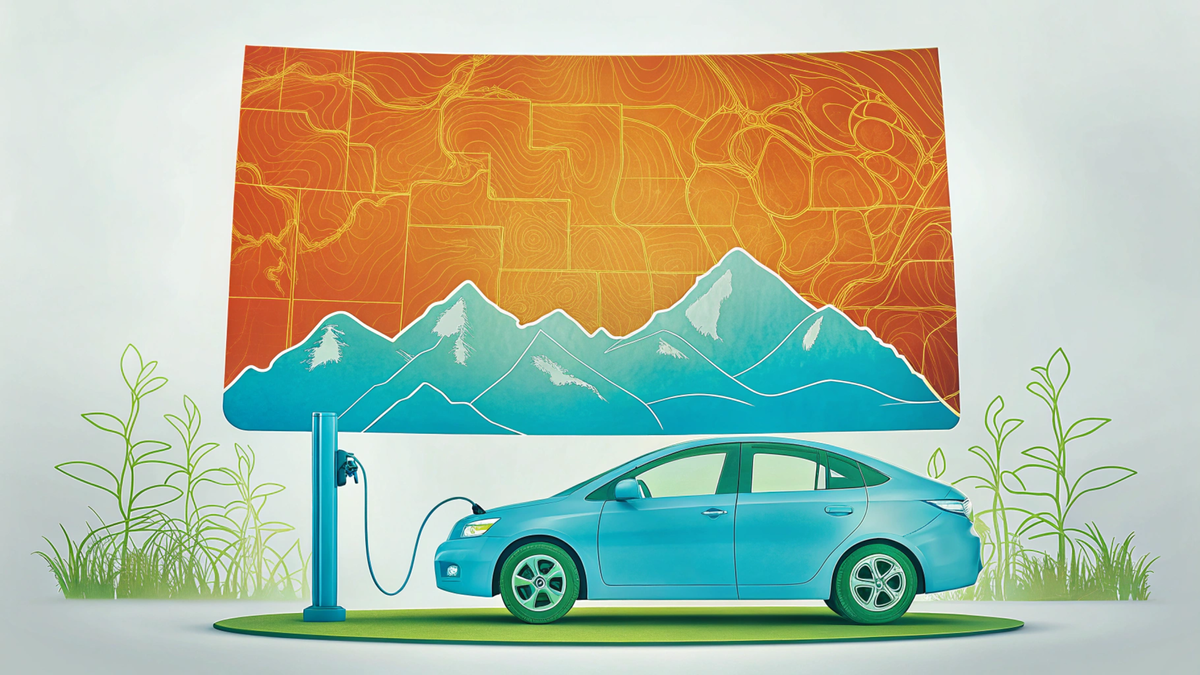How Flexible EV Charging Can Revolutionize Colorado's Energy System
Colorado's ambitious goals for vehicle electrification could get a major boost. Find out how flexible EV charging can lead to significant cost savings and a more resilient, decarbonized energy system.

Introduction
The potential of vehicle charging flexibility within Colorado's ever-changing energy landscape has significant ambitions for vehicle electrification. EER's study, in partnership with Regulatory Assistance Project (RAP), focuses on the value of flexible vehicle charging to a decarbonized energy system. By modeling different flexibility scenarios, the study highlights potential cost savings and grid improvements that could result from smart EV charging strategies.
Methods
EER utilized its RIO model, incorporating data from the 2023 Annual Decarbonization Perspective, to conduct this analysis. RIO quantifies electricity generation and transmission costs, tracking peak load across four archetypal feeders: residential, commercial, industrial, and highway fast charging. The model assesses the value of flexible charging to the electricity sector by representing these four archetypal feeders. This approach allows for a detailed understanding of how shifting EV charging patterns can impact the broader energy system, offering insights beyond traditional analyses by co-optimizing electricity and fuels sectors.
Scenarios
The study explores several scenarios with varying levels of charging flexibility:
• Zero Flexibility (ZF): Represents a system without any transportation load shifting benefits.
• Flexibility Light (FL): Assumes limited flexibility from heavy-duty vehicles (HDV) and medium-duty vehicles (MDV), with only 50% of light-duty vehicles (LDV) able to shift charging in residential settings (4 hours of shifting).
• Flexibility Mid (FM): Assumes minimal flexibility from HDV and MDV (2-hour delay for overnight charging), no highway charging flexibility, and 75% of LDV able to shift charging (8 hours of shifting). • Flexibility High (FH): Assumes additional flexibility across all vehicle types, with potential for up to 24-hour participation in demand response programs for LDV (75% participation) and shifting capabilities for HDV, MDV, and highway charging.

Results
Here are some key findings from the study:
- Significant Value: Vehicle flexibility unlocks significant value for the energy system.
- The total energy system value ranges from $100-$300 million per year in 2035 to $200-$900 million per year by 2050.
- The "Flexibility High" scenario delivers the most value.
- Avoided Investments: Flexibility reduces the need for grid upgrades and optimizes renewable and storage investments.
- Enhanced demand flexibility flattens system peaks.
- With high levels of vehicle flexibility, the energy system can avoid thermal investments.
- Residential is Key: Residential LDV charging flexibility is a major driver of overall value.
- A significant portion of overall value is based on avoided costs associated with the residential feeder.
- This flexibility is enabled by increased use of Level 2 charging in residential applications.
Discussion
The study underscores that unlocking inherent flexibility through strategic programs is crucial, yet flexibility alone cannot overcome broader economic barriers without complementary policies. To harness the full potential of flexible EV charging, policymakers can design targeted incentives that encourage adoption while aligning consumer behavior with grid needs. Furthermore, utility-led programs, such as time-of-use rates and managed charging initiatives, could bridge the gap between technological potential and real-world implementation. Future research could delve into the interplay between dynamic pricing models, equity considerations, and grid modernization efforts to further maximize the benefits of vehicle flexibility for Colorado's evolving energy system.






